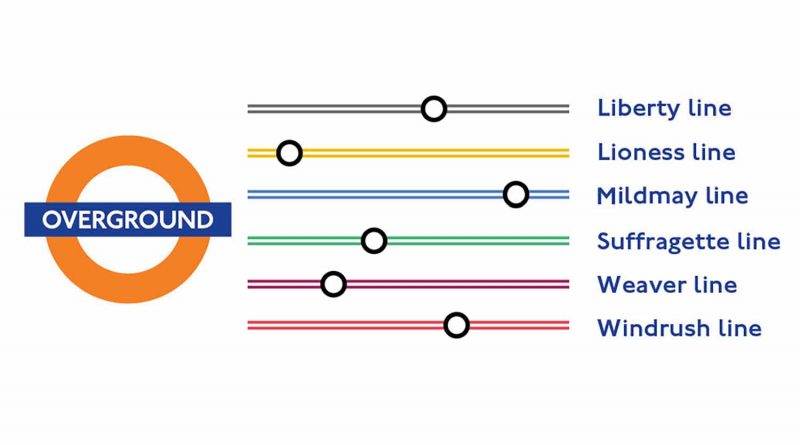London Overground lines will have new names and colours by the end of 2024
All aboard the Suffragette line as London’s Overground network is getting a makeover by the end of this year.
Our overground network is a burnt orange tangle of routes that serve the parts of London neglected by the tube. Established in 2007, it is the perfect mode of transport to nip from Haggerston to Whitechapel and visit some of the amazing markets we have around Bow.
At a glance, despite its singular colour, there are different routes, six to be exact. For those that don’t know the lines inside out, it’s pretty hard to decipher the Liverpool Street line from the Stratford line, unlike our multi-coloured underground beneath London, where each route is distinguishable.
Well, not for long, as each of those six overground routes will be renamed and given their unique colour by the end of 2024. Not only giving the lines an identity and character, TfL has said it will make the overground easier to navigate and ‘improve the way our customers experience our network’; sounds great, right?
Well, the renaming process has been met with some pushback as Sadiq Khan faced criticism from Conservative MPs over the initiative. Responding to the naming announcement, Susan Hall, the conservative party candidate for London Mayor, said, ‘1,000 people have been killed under his Mayoralty, and yet Sadiq Khan is only interested in this virtue signalling nonsense.’
Accusations of virtue signalling aside, the project will cost the taxpayer £6.3 million, with the first pay-out of £115,275 going to the branding agency contracted to develop the names and colours.
Khan said, ‘The new names and colours have been chosen through engagement with passengers, historians and local communities, reflecting the heritage and diversity of our amazing city.’
We love a historical reference in the East End; among many, Bow Churchyard and Bow Lane spring to mind, formerly known as Hosier Lane after the local stocking-making trade and, before that, Cordewanere Street, meaning leather workers.
So, back to the overground, we wanted to find out what their new names and colours were, and more importantly, which parts of London’s diverse history they nod to:
The Lioness Line will be yellow and serve journeys from Euston to Watford Junction. An ode to the England women’s national football team winning Euro 2022 at Wembley, which is on the line and their inspiration and empowerment for the next generation of women and girls in sport.
The Mildmay Line, Stratford to Richmond/Clapham Junction, will be blue, referencing the Shoreditch hospital that played a pivotal role in treating the first HIV patients in the 1980s.
The Windrush Line stretches from Highbury & Islington to New Cross/Crystal Palace/West Croydon/Clapham Junction and will be sporting a red colour. It honours the Windrush generation, who came to the UK from the Caribbean; the overground will stop in places with links to Caribbean communities.
The Weaver Line will be maroon and champion the textile trade and migrant communities such as the Huguenots who found work and home in Spitalfields. The line runs through Liverpool Street, Spitalfields, Bethnal Green and Hackney up to Cheshunt/Enfield Town/Chingford.
The Suffragette Line, which takes passengers from Gospel Oak to Barking Riverside, will be green and a celebration of the battle for women’s rights and their right to vote, most of which took place in Bow under the leadership of Sylvia Pankhurst here in Bow, paving the way for the women of today.
The Liberty Line from Romford to Upminster is less colourful but still a new change to grey. This name refers to freedom and the historical independence of the people of Havering, through which it runs.
‘London Overground’ will remain the umbrella brand, but now we can ride the Suffragette line, change to the Windrush and still enjoy snooping down at London’s hodgepodge of roof gardens, washing lines and garden parties.
If you enjoyed this article, why not read What are you called if you’re from Bow?


